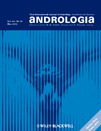Comparison of colony formation in adult mouse spermatogonial stem cells developed in Sertoli and STO coculture systems
Summary
This study aimed to compare the in vitro effects of coculture with Sertoli and SIM mouse embryo-derived thioguanine- and ouabain-resistant (STO) feeder layer cells on the efficiency of adult mouse spermatogonial stem cells (SSCs) colony formation. Sertoli and SSCs were isolated from testes, and their identity was confirmed using immunocytochemistry against Oct4, CDH1, PLZF and C-kit for SSCs and vimentin for Sertoli cells. SSCs were cultured in a simple culture system (control group) and on top of the Sertoli and STO feeder layers for 2 weeks. The number and diameter of colonies were evaluated during third, 7th, 10th and 14th day of culture, and the expression of the Oct-4, α6 and β1 integrins was assessed using quantitative RT-PCR. Significant differences were observed between the three groups, separately for each time (P < 0.05), with higher mean in number and diameter for Sertoli cells (P < 0.05). The results of RT-PCR showed higher gene expression of β1 integrin in Sertoli group, but no significant differences were observed in Oct-4 and α6 integrin gene expression among the three groups. Based the on the optimal effect of Seroli cells on the colony formation of SSCs, it is suggested to use these cells for better colonisation of SSCs.




